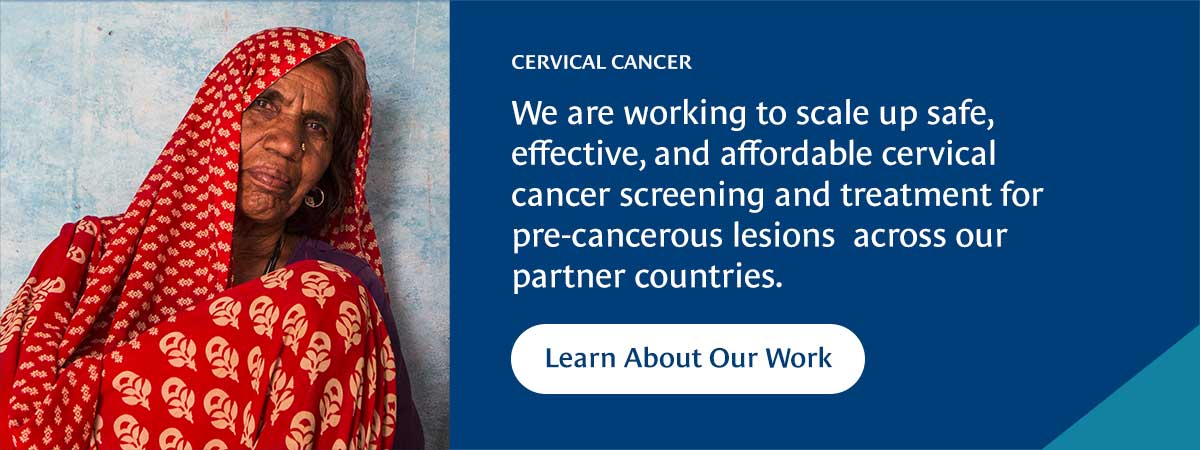CHAI has published a study—nested within the first large-scale, public sector driven cervical cancer secondary prevention program in Nigeria—in BMC Public Health that provides evidence that low-resource settings can effectively introduce routine same day screen and treat services in public health facilities for the prevention of cervical cancer.
Cervical cancer affects more than half a million women each year globally, but disproportionately impacts those living in low-middle-income countries where nearly nine in ten dies of the disease. Nigeria contributes significantly to the global burden with an incidence of 18.4 per 100,000 women (vs global average of 13.3 per 100,000 women) and an estimated 12,000 women diagnosed every year.
Through the study, the national cervical cancer program was also successful in introducing and expanding human papillomavirus (HPV) DNA testing by leveraging existing multi-disease testing platforms and integrating HPV testing onto devices that had spare testing capacity. The study noted a high rate of treatment (96 percent) among eligible women identified with precancerous lesions, which was attributed to a same-day screen and treat approach. Thermal ablation as a treatment method was highly accepted by healthcare workers, including by an expanded cadre (nurses and community health extension workers) that are now able to perform the procedure.
However, HPV testing faced many systemic constraints, thereby limiting its uptake. Some of the challenges faced were cumbersome sample transport processes, non-prioritization of HPV DNA testing at laboratories due to workload, periodic malfunctioning of testing platforms, limited funding for lab consumables, inconsistent availability, and supply of reagents, resulting in slow return of results, which negatively impacted the linkage of HPV positive women to care.
Another key challenge was that only 21 percent of women who tested positive on their HPV test attended their triage appointment (per the screen-triage-treat National screening algorithm for HPV testing), thus leading to a large loss-to-follow up between an HPV test and the triage, translating to a missed opportunity to treat pre-cancerous lesions before they advanced to invasive cancer. The reasons for the large loss to follow up included hesitant health seeking behavior of women, and health systems challenges such as the unavailability of healthcare workers given their existing heavy workload.
The program has yielded several successes which can be attributed to effective delivery systems. These include existing multiplex diagnostic platforms to expand HPV DNA testing, integration of cervical cancer screening into routine health services targeting women of reproductive age, successful demand generation strategies leveraging civil society organizations and community mobilizers, and same day screen and treat where possible. However, concerted effort is required to ensure HPV positive women and those with suspected cancer are adequately linked to care to reduce morbidity and mortality associated with cervical cancer in Nigeria. There is a need to strengthen mechanisms for follow-up and tracking of women across the continuum of care to improve linkage to triage and onward treatment. Further implementation research aimed at improving the use of the existing centralized and near point-of-care (POC) platforms to facilitate same day results can be considered.






